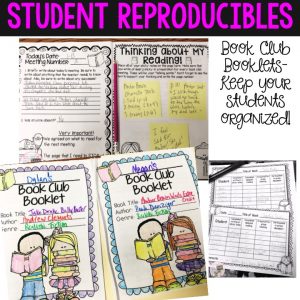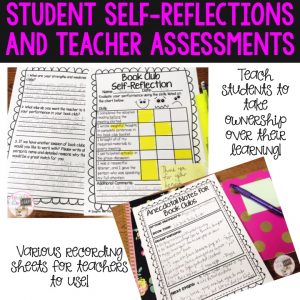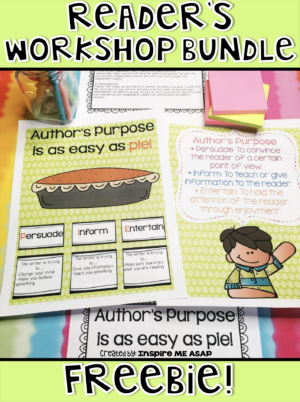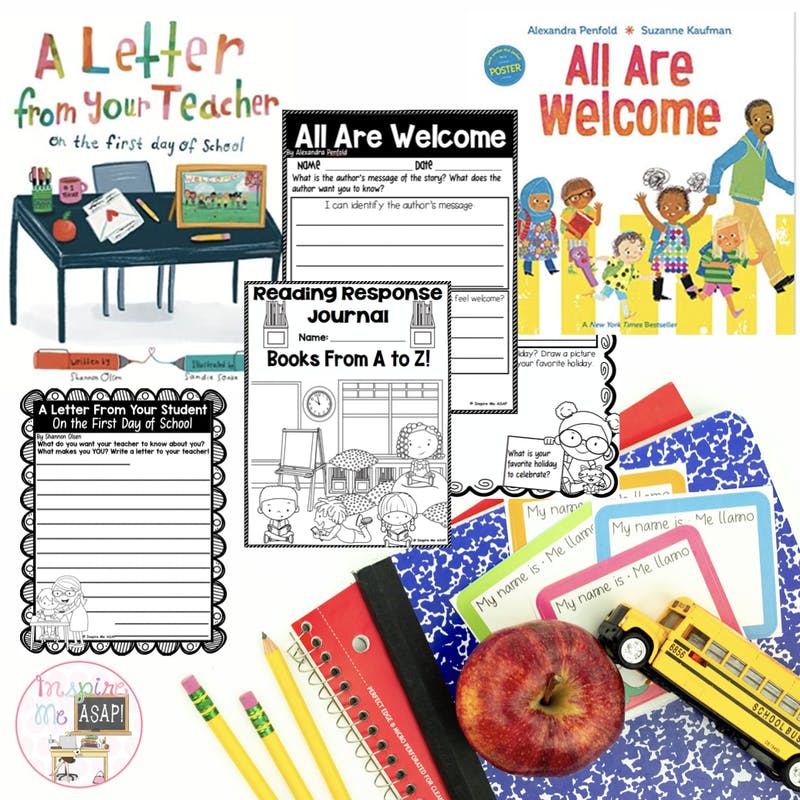
This is my second post in my eight post series about implementing book clubs into your classroom. Last week, I wrote an Introduction to Book Clubs, which you can read more about HERE. Today, I am writing about some of the many benefits of implementing book clubs into your classroom.

Although there are so many reasons that I could write about, I will focus on what I believe to be some of the most important benefits.
1. Book Clubs Provide Student Choice

Student choice goes hand in hand with student motivation. When students have a voice and a choice, they are much more likely to be motivated. Book clubs provide ample opportunity for student choice. When I first introduce book clubs with my students, they initially have choice about what book to read. As the students work together, they decide on a realistic amount of reading to complete for their next meeting.
Book club members choose what the focus will be for their discussion. For example, one book club finished reading The Chocolate Touch and wanted to make a list of positive and negative character traits that describe the main character. I guided their discussion by asking them to provide evidence in the text to support their answers. Another group was reading Jake Drake and decided to create posters to hang up around the school, spreading the message about bullying. The group reading Judy Moody Mood Martain wanted to compare the book to another Judy Moody book, making a Venn diagram to compare and contrast the events.
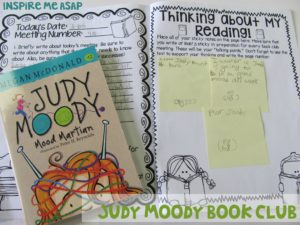
Students take ownership during book clubs even with simple tasks, such as choosing where in the classroom they will meet and creating a list of materials they will need for each meeting. I also like to have my students create their very own club name- one that is unique to the book they selected. For example, the Chocolate Challengers is a group name for my readers who are reading The Chocolate Touch. As you can see, these opportunities really allow students to have choice when involved with book clubs.
2. Book Clubs Help Engage and Motivate Readers

How many times during the school year do you have kids in your class starting their own clubs? I don’t know about you, but a couple of times throughout the year, I will hear about how my students started their own club when they were at recess. The bad news is that there always seems to be someone excluded from this club and hurt feelings are inevidable. The *good* news is that book clubs are for absolutely every single one of your students!!! Everyone is invited! No one left out! Forming clubs, building friendships, talking about a common interests-kids developmentally LOVE to do this! Book clubs naturally mirrors the other clubs your students are a part of and really helps to develop that love of reading.
As I begin book clubs with my students, I like to brainstorm a list of different clubs that they are a part of. Our list is usually pretty long and includes everything from the swim team to the art club. This really helps to make a connection with what the reading clubs we are starting in class.
Book clubs also help to motivate your readers to READ more! When your students are in a special club where they are reading the same book as their peers, they are highly motivated to complete their assigned reading and writing. The students can’t wait to dive into their book club discussion and share what they were thinking with their group.
3. Book Clubs Help Differentiate Your Reading Instruction
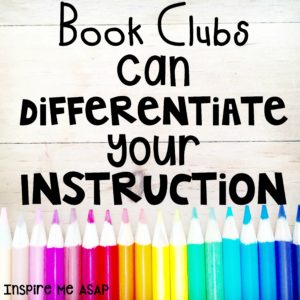
First and foremost, the actual text itself is one way to differentiate your instruction. Each club is reading a different book that is at their independent reading level. Again, it is important to note that the students are the ones who are selecting the text that they are interested in!
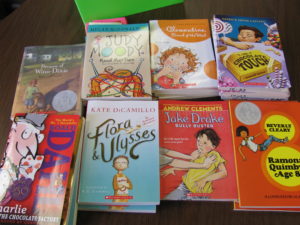
As book clubs are up and running, the teacher meets with each club to set up goals. Based on the goals that each group creates, the teacher then is able to scaffold his/her instruction during book club meetings. For example, you might work with one group on comparing similar topics to multiple books in a specific series- which meets CCSS. Another group might be analyzing character traits of the main character. These students might be identifying synonyms for these character traits and providing evidence from the text to support their opinions…another connection to CCSS. Yet another group can focus on identifying the role of secondary characters in the main character’s journey. It is important to note that these goals could correlate to what I am teaching during the whole class reading workshop mini-lessons.
4. Book Clubs Address Common Core State Standards
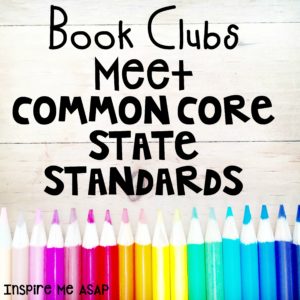
Speaking of Common Core State Standards, that brings me to my last benefit of book clubs. Let’s start by breaking down the English Language Arts Standards for Speaking and Listening, specifically for third grade. (The Speaking and Listening Anchor Standards are more general.) The standard is in bold and my response to it is in italics.
CCSS.ELA-LITERACY.SL.3.1
Engage effectively in a range of collaborative discussions (one-on-one, in groups, and teacher-led) with diverse partners on grade 3 topics and texts, building on others’ ideas and expressing their own clearly.
If this does not sum up book clubs to its core, I don’t know what does! When students meet with their peers, they are actively engaged in collaborative discussions about texts.
CCSS.ELA-LITERACY.SL.3.1.A
Come to discussions prepared, having read or studied required material; explicitly draw on that preparation and other information known about the topic to explore ideas under discussion.
Book club members are held accountable for completing their assigned reading and writing work. I rarely have students who come to their meeting unprepared. I know. It seems hard to believe, right? However, in my experience, the students do not want to let their group members down and will do whatever it takes to get their work done. (I even had one student ask me if he could sit out of extra recess for a few minutes so he could finish his reading!)
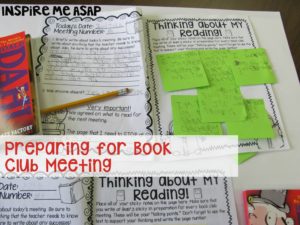
CCSS.ELA-LITERACY.SL.3.1.B
Follow agreed-upon rules for discussions (e.g., gaining the floor in respectful ways, listening to others with care, speaking one at a time about the topics and texts under discussion).
I will talk more about this during my Chapter 4 post, however this picture below is an example of how my students create club-specific agreed upon rules. It is hard to see, but they wrote their own expectations in pencil.
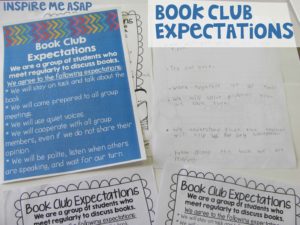
CCSS.ELA-LITERACY.SL.3.1.C
Ask questions to check understanding of information presented, stay on topic, and link their comments to the remarks of others.
CCSS.ELA-LITERACY.SL.3.1.D
Explain their own ideas and understanding in light of the discussion.
CCSS.ELA-LITERACY.SL.3.3
Ask and answer questions about information from a speaker, offering appropriate elaboration and detail.
In my chapter six post, I will talk more in-depth about how I teach my students to use student-led conversations in book clubs to meet the CCSS listed above.
Previous and Upcoming topics:

Chapter One: Introduction to book clubs
Chapter Two: Benefits of book clubs
Chapter Three: Matching books to readers
Chapter Four: Book club expectations
Chapter Five: Accountability with book club members
Chapter Six: Student-led conversations in book clubs
Chapter Seven: Role of the teacher in book clubs
Chapter Eight: Using assessments in book clubs
What benefits do YOU see when your students are working in a book club?
I would love to hear from you! Also, please feel free to email me or write a comment with your question. I will address all questions throughout my blog post series on book clubs.
Looking for a resource to help you implement book clubs in your classroom?
Check out my resource below:
Looking for an engaging and sure-fire way to motivate your readers? This 107 page file has everything you need to know in order to effectively implement a book clubs with your rockin’ readers, while meeting the CCSS for Speaking and Listening.
There are 15 mini-lessons that are included in this file, which focus on establishing routines and setting expectations for book clubs with your students.
Mini-lessons include:
Detailed lesson plans
Colorful posters for you to print for your anchor charts
Reproducibles for your students
During this unit, readers will learn to:
-Define book clubs and understand its importance
-Describe characteristics of what book clubs LOOK like
-Describe characteristics of what book clubs SOUND like
-Book club members are assigned
-Commit to expected behaviors
-Shop for a book
-Follow agendas to stay on task
-Prepare for group meetings
-Read assigned portions of text and take notes about what they read
-Participate in a group discussion
-Share their opinions with group members
-Keep conversations on-task and focused
-Compromise and problem solve when issues arise
-Use prompts to guide their discussions
-Self-reflect and evaluate their performance
Also included in this unit:
-A note to send home to parents
-Tips for teachers about implementing book clubs successfully
-Detailed rubrics for teachers and students
-Bulletin board resources, where each group can post their group name, picture, assignment, and other important information
Click on the button below to purchase BOOK CLUBS
This Book Club Resource is also part of my Reading Workshop BUNDLE
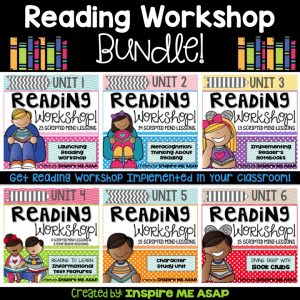
Click HERE to purchase Book Clubs on Teachers Pay Teachers.
Save 10% by purchasing directly from my website.


